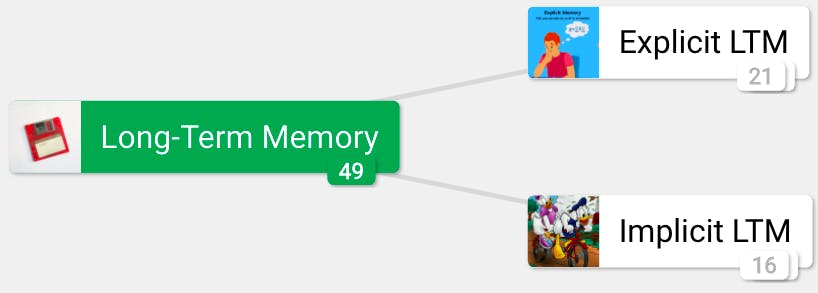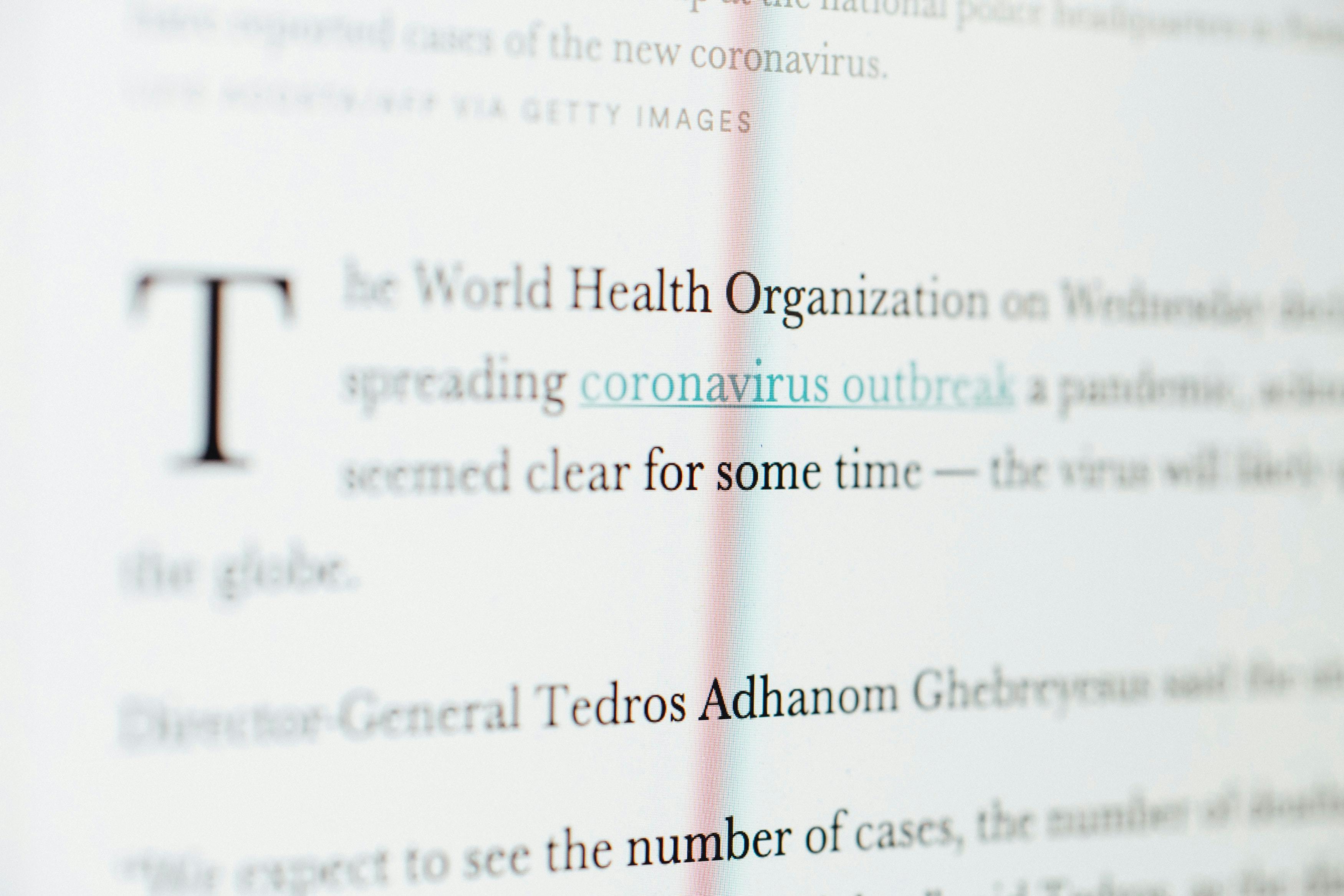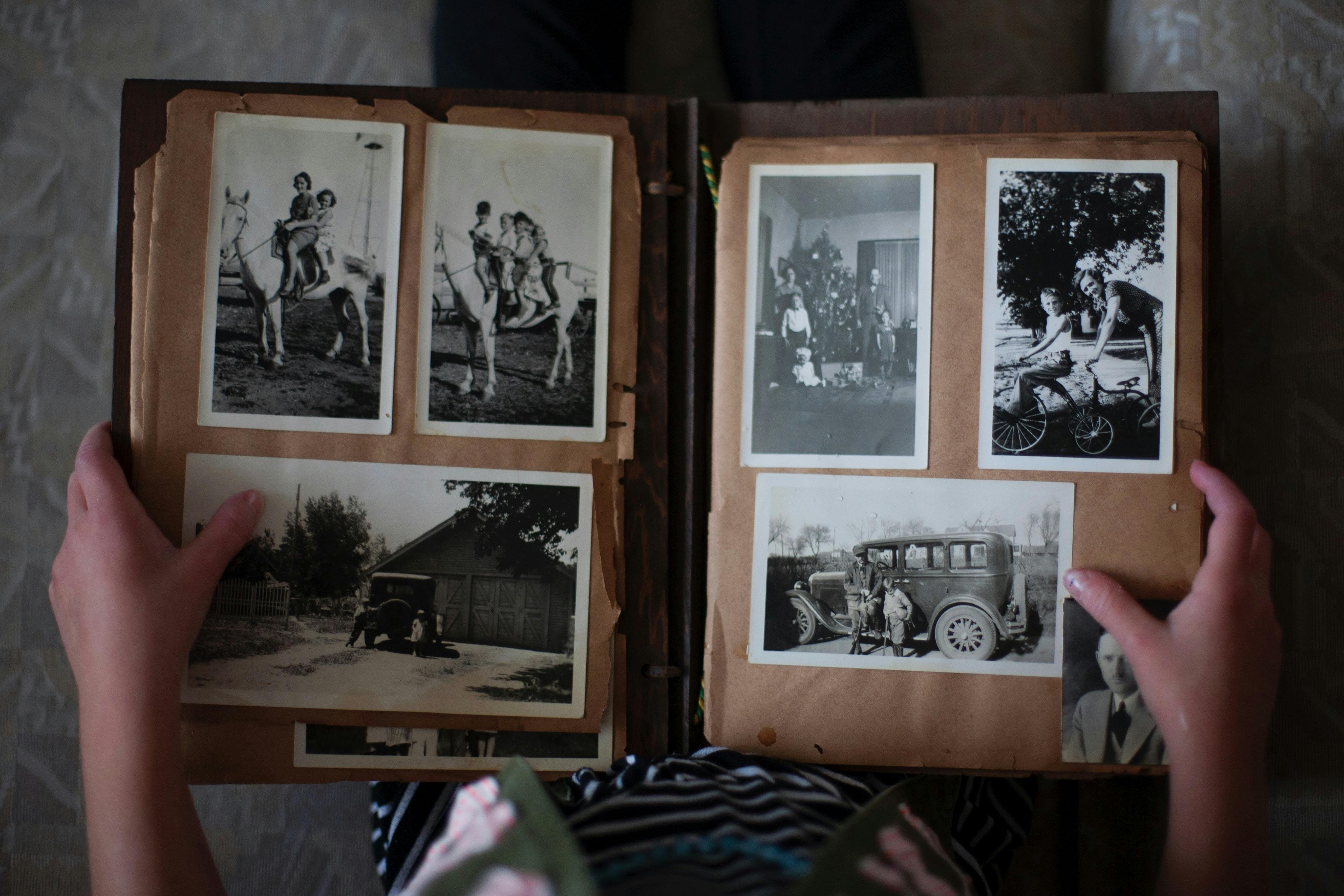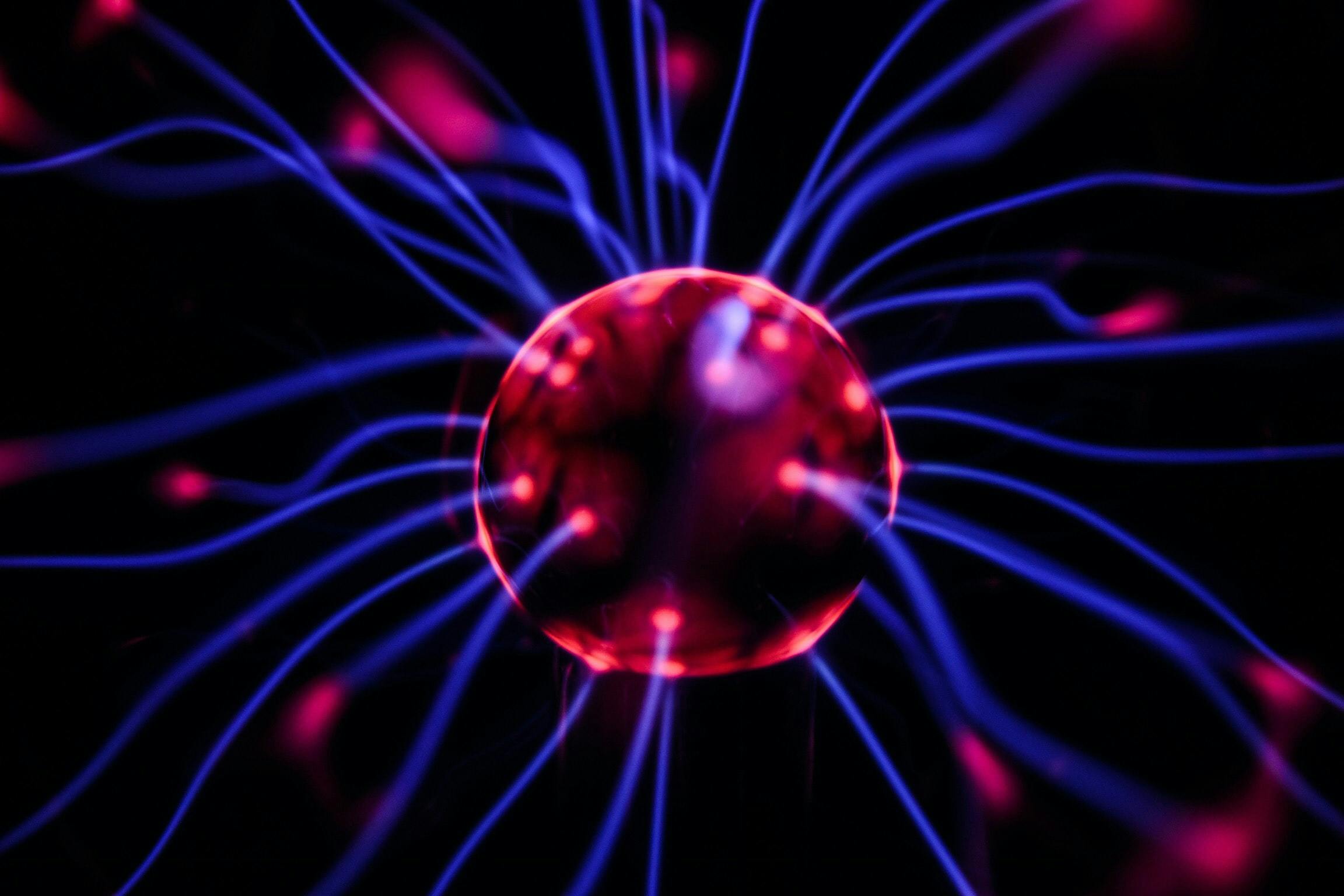Understanding Your Long-Term Memory
The books you read, the courses you take, the ted-talks you listen to: what do they all have in common? They give you knowledge and insights you probably hope to remember and apply to your life. But how come you can’t always remember these insights? The simplified answer is: it’s due to the insights not being properly stored in your long-term memory.
Understanding how your long-term memory works and how to improve it helps you form a better foundation to remember more. And remembering more gives you a better basis to influence the future actions you care about. Such as understanding new relevant concepts, making decisions, and solving problems.
This blogpost aims to give you an introduction to this foundation, helping you understand how your long-term memory works.
What is Long-Term Memory?
The Long-Term Memory(LTM) system is part of the 2nd phase of the memory processing system which I detail in our blog post “How your memory works & how to improve it”. It is the memory storage system you try to tap into when you’re trying to remember things that are more complex and occurred a long time ago.
The renowned experimental psychologist and cognitive neuroscientist Endel Tulving created the famous model that has divided LTM into two main memory categories each with its sub-types:
Explicit Memories
- Semantic
- Episodic
- Spatial
- Autobiographical
Implicit Memories
- Procedural
- Priming

Explicit Memory
Explicit Memories are the complex memories you store in your long-term memory processing system which consists of facts &/or events). This type of memory requires conscious effort to memorize and will fade in the absence of recall. Recalling and receiving explicit memory is verbal in thoughts and in communication. Explicit memory is what most people think of when they think of the word “memory”.
There are 4 main types of explicit memory abbreviated as SESA: Semantic, Episodic, Spatial, and Autobiographical.
Semantic Memory

Semantic Memory is also known as declarative memory, which is the information about the world. It is best explained as any memory that can be described (declared) in words i.e. all facts, knowledge, and concepts that can be consciously retrieved by your mind.
Semantic memories focus on “knowing what” something is. Stockholm is the capital of Sweden is a semantic memory as you can declare what it is verbally. Semantic memories are all the complex theories, methods, and concepts you’ve learned throughout your life.
There are several techniques that improve storing Semantic Memory. They all in essence involve tying the complex information into visuals and/or experiences. I will exemplify some examples further in the post.
Do you remember what SESA stood for? (Semantic, Episodic, Spatial & Autobiographical). This is an example of a mnemonic technique tying semantic information into easily rememberable cues. Mnemonic stands for pattern, systems and/or association that help with recall.
Episodic Memory

Episodic memories are the memories stored in our Long-term memory about events, episodes &/or occurrences you’ve experienced throughout your life. Similar to semantic memory, episodic memories are declarative.
Episodic memories ensure that you “know that” an experience has occurred i.e. knowing that you have eaten breakfast this morning, adding a perspective of time in your memory.
A good example of an episodic memory could be the memory of your first kiss.
To improve your episodic memory you need to practice encoding and recalling episodic memories. A good technique to train your brain to recall episodic memories involves watching movies. Give a movie your full intention from start to finish, and then try to retrieve and recall as many details as you can.
Episodic Memories are also our own subjective experiences and learnings. An example of episodic memory in action can be a time you went on a job interview and told a bad joke that the interviewer took badly. This ended up you not getting the job.
Later on, you go on another interview. This time you recall how pulling that joke didn’t go so well so you stop yourself from making it again. You might not recall the specific details of the last interview, but you remember the key learning that making the joke wasn’t a good idea.
Improving your episodic memory means remembering the key experiences that help you make better decisions and actions in the future.
Journaling is another great practice to improve your utilization of episodic memory. Promoting you to reflect on what key learnings are important to take from each experience, and at the same time helps you retain them.
Spatial Memory

Spatial Memories (SM) are the cognitive formation of spatial arrangements in 2D and 3D. In other words; a map in your brain. This type of memory is what enables your ability to navigate around a city.
Techniques taking advantage of our Spatial Memory are one of the best methods to improve our memorization. And deserves a post on its own, which will be detailed in the future.
In the book Moonwalking with Einstein, Joshua Foer describes the vastness of capacity our hippocampal region has (the part of the brain that governs spatial memory and navigation). Taxi drivers of London have to undergo an infamously daunting exam known as “the knowledge”, which requires them to memorize all locations and traffic patterns of all 25’000 streets of London, as well as the location of all the cities 1’400 landmarks. When scientists conducted an MRI study on London's cab-drivers, they discovered an interesting difference in their posterior hippocampus. That theirs were 7% percent larger, compared to normal.
The Memory Palace, also known as the Method of Loci. Is one of the most well-known techniques to utilize Spatial Memory to improve your memorization. The core concept revolves around tying semantic information to virtual places.
Joshua Foer explains it best in his book:
“The idea is to create a space in the mind’s eye, a place that you know well and can easily visualize, and then populate that imagined place with images representing whatever you want to remember. Known as the “method of loci” by the Romans, such a building would later come to be called a “memory palace.”

Joshua Foer - Moonwalking with Einstein
Autobiographical Memory
Autobiographical memories are a complex blend of memories of single, recurring, and extended events. Memories integrated into a coherent story of self that is created and evaluated through socio-cultural practices (Fivush & Gracy, 2017).
In other words, autobiographical memories are a mixture of semantic and episodic memories. While episodic memories revolve around past events, autobiographical involves the complex details of events tied to your personal history. This can both be episodic, but also add semantic memory elements such as the name and address of your high-school.
It’s common to have difficulties separating autobiographical with episodic (I personally had when I first learned about it). There’s an avid academic discussion in regards to their separation. Gilboa (2004) for instance analyzed various neuroimaging studies mapping the difference in neural activity in the prefrontal cortex, suggesting a clear difference between the two memory concepts.
“Episodic and autobiographical memory are best viewed as overlapping concepts with both similarities and differences in their operation.”
Roediger & Marsh (2003) Episodic and Autobiographical Memory
What is important to take from here, is that by having differing memory types; give way to deeper reflection and understanding of those memories.
Similar to how to improve your Episodic Memory a study made by Haj et al in 2018 suggested to improve your autobiographical memory, you need to tell more about yourself. Practice recalling your experiences, and telling yourself or other people about them.
Implicit Memory
Implicit memories are the unconscious and effortless memories you store. It's the gathered skills and memories that operate when you do something and say “it’s like riding a bike”. This type of memory is non-verbal as you can't describe it, you can only do it. There are 2 types of Implicit Memory:
Procedural Memory
Procedural Memories consist of the memories and knowledge of knowing “how to do things” e.g. riding a horse, playing an instrument, or any other procedure that is correlated to your motor skills.
This type of memory is usually harder to put into words.

Priming
Priming is a non-conscious storing of memory and information in regards to our association with words and objects. Priming can be negative, positive, associative, affective, perceptual, conceptual, semantic, or repetitive. The unconscious associations you have of various objects/events in life. Can be defined as our implicit associations i.e. our unconscious prejudices.
How Priming affects your everyday life:
- Influence how you see perceive the world
- Subtly influences your behavior
- Has potential to help you perform better in an educational setting
Priming is also seen as the measurable difference in the performance of an implicit procedural skill. Tulving & Schacter describe it as:
“Priming refers to an improvement or change in the identification, production, or classification of a stimulus as a result of a prior encounter with the same or a related stimulus.”
Tulving & Schacter (1990), Priming and Human Memory Systems
Priming governs how you react to stimuli (anything you see, think, feel, do and remember). If I mention the word “Algebra Test”, some of you will get a bad emotion and probably think “I was never good at that”. Question is, is that priming correct?
Being aware of your implicit associations and memories, give you further awareness of yourself and your own capabilities. To improve your own awareness, can be very simply put to practice mindfulness. Which is beyond the scope of this post. Mindful.org is however a good source to start if you’re curious!
Key Take-aways
1. You have two types of long term memory: Explicit and Implicit. Where explicit is defined as all your knowledge in which you can describe, implicit are all your subconscious associations and skills.
2. To improve your explicit memory, you need to utilize techniques that enable connecting semantic, episodic, spatial, and autobiographical memories together.
Examples of recommended practices:
- Journaling - Helps you remember your experiences in more detail and enhances your episodic memories.
- Memory Palace - Visual and spatial memories are the “strongest” types of memories that can be stored in the Long Term Memory system. Visualizing a place you can navigate around and filling them with complex information helps with your memorization.
- Mnemonic Cues - Means creating easy memorable systems of cues that help with recalling the complex information. “Jack My Man” or JMM, are the first letters of these 3 insights and are examples of cues that can help you remember them.
3. Understanding your implicit memories and association can improve your learning, as it governs your perception of self. Looking into mindfulness is good practice to improve your awareness.
Stay tuned as I will delve into the techniques which enable improving your explicit memorization in the near future.
Best wishes in your journey of growth.
Sources are detailed in my WisdomTree.


